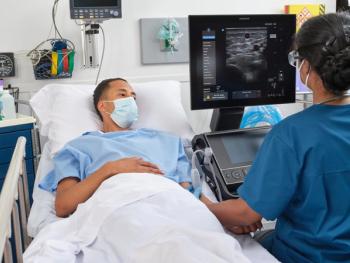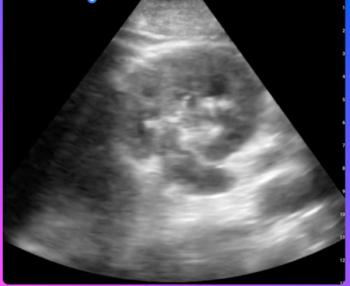
Ultrasound training could begin in college
Medical students may not need to wait for a residency or fellowship to gain experience with ultrasound. They could become familiar with the modality long before graduation, according to a study presented at the American Institute of Ultrasound in Medicine meeting in June.
Medical students may not need to wait for a residency or fellowship to gain experience with ultrasound. They could become familiar with the modality long before graduation, according to a study presented at the American Institute of Ultrasound in Medicine meeting in June.
While interest in diagnostic ultrasound is waning within radiology, clinical applications in other specialties are growing. Ultrasound advocates fear, however, that insufficiently trained clinicians are taking up ultrasound probes, and little information is available about whether they received adequate training early in their careers.
Dr. David Bahner and colleagues at Ohio State University compared the ultrasound skills of medical students who had extracurricular exposure to diagnostic ultrasound with those whose ultrasound training was sketchy. The investigators found that students who had had specialized education performed several diagnostic ultrasound tests more confidently than those who had not.
Bahner's group surveyed 203 students. Thirty-seven had enrolled in an extracurricular course on evidence-based learning (EBL) that exposed first-year students to focused diagnostic ultrasound. The remaining 166 did not take the course.
Students completed an online survey in which they reported the number of hours of ultrasound training they had received during their education and rated on a scale of one to 10 their comfort level in performing a series of tasks. The tasks included detection of:
- cardiac motion
- pericardial effusion
- aortic caliber greater than 3 cm
- free fluid in the torso
- intrauterine pregnancy
The EBL and non-EBL groups recorded 16.6 versus 3.07 hours of didactic learning and 16.25 versus 2.25 hours of hands-on ultrasound training, respectively. The two groups' comfort scores for diagnostic tests revealed statistically significant differences favoring EBL students. Of the EBL students, 95% said they felt comfortable detecting cardiac motion with ultrasound as opposed to 40.4% of non-EBL students.
EBL students registered significantly higher confidence in detecting pericardial effusion and measuring aortic size, and they reported higher overall comfort levels using ultrasound. The study authors proposed that future research should concentrate on the practical skills of medical students learning ultrasound, which can be successfully integrated into medical school education.
For more information from the Diagnostic Imaging archives:
Newsletter
Stay at the forefront of radiology with the Diagnostic Imaging newsletter, delivering the latest news, clinical insights, and imaging advancements for today’s radiologists.




























